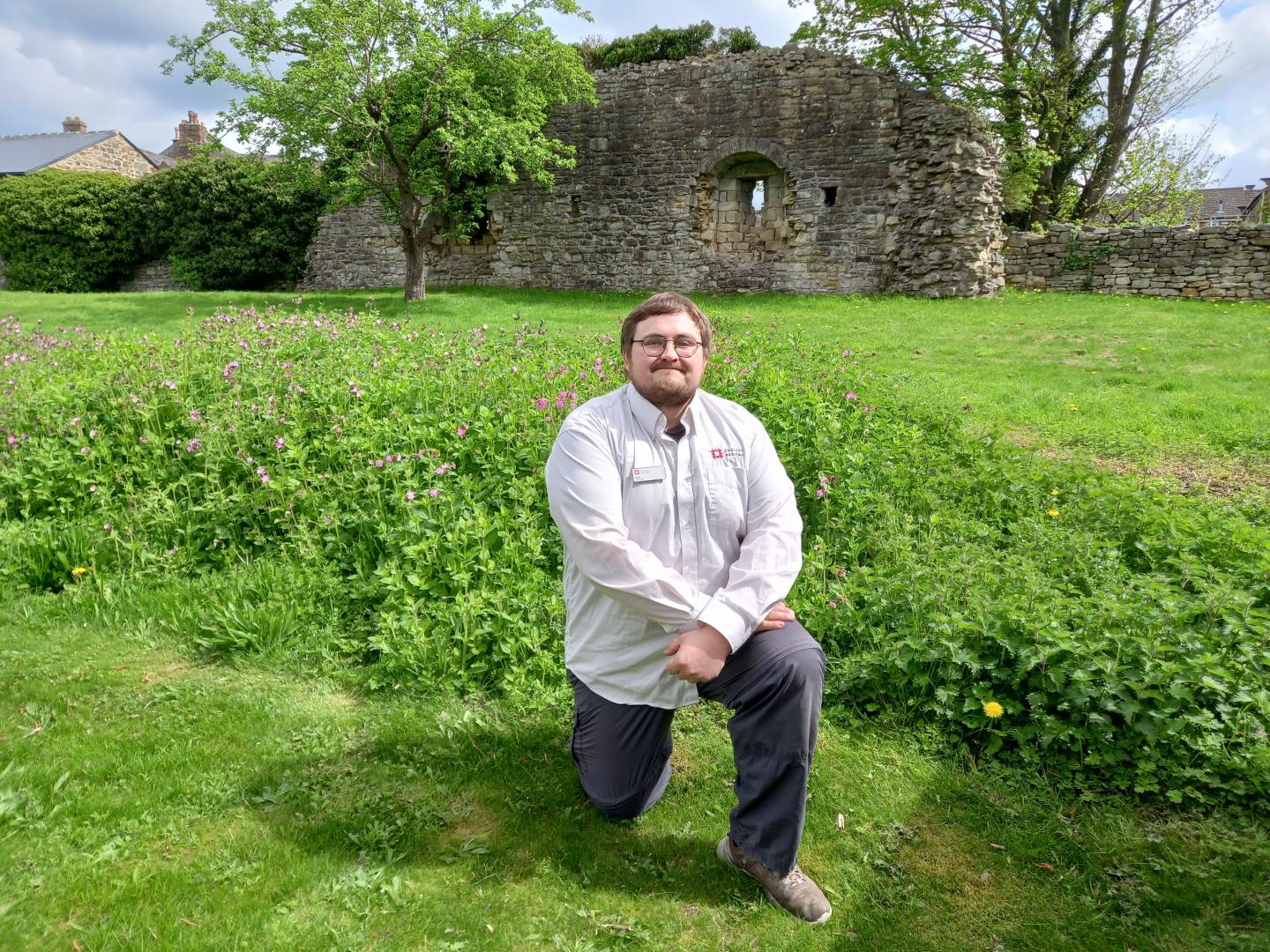THE flags may have been taken down weeks ago and the bunting removed but inside the ancient walls of Barnard Castle, the impact of King Charles III’s Coronation impact is still being felt.
As part of the royal celebrations, English Heritage announced that wild meadows were to be created at 100 of its properties across the country – and Barnard Castle will be one of the first.
Preparations have begun to create a picture-perfect piece of English countryside within the old stone walls – the site selected is near the orchard, to the left of the castle’s main entrance.
English Heritage’s head of gardens, John Watkins, who came up with the idea, says he can’t wait to see the Barnard Castle beauty spot take shape and says the King should be applauded for helping drive the scheme forward.
“The environment has been a lifelong passion of the prince, now King, and the countryside could not have a better supporter,” said John.
“When Charles was prince he supported the creation of some 80 new meadows to mark the Queen’s Diamond Jubilee and we were delighted when he agreed to let us call our project The King’s Meadows and gave us his backing.”
The intentional greening of properties and restoring natural settings at sites such as Barnard Castle is not new for English Heritage. “But the 100 meadow project gives us focus,” said Mr Watkins, who feels that a thriving wild meadow is one of the greatest wonders of the English countryside.
“They were important ecological islands which were historically common and are now rare,” he added.
“Meadows might seem unassuming, but they are a source of natural diversity: the variety in just a square-foot of land is amazing.”
The meadows being created are English hay meadows, which means a great many flowering plants might be found among native grasses including ox-eye daisies, yellow-rattle, plantains, docks, buttercups, vetches and clovers, dandelions, selfheal, lesser knapweed, hawkbits, and cowslips.
The gardeners will use flowers, herbs and grasses that grow locally, so that the castle’s hay meadow will be one that local people from hundreds of years ago would have recognised.
As well as the sights and smells of a hay meadow, there’s also the sounds: butterflies and moths might be silent but there’s the buzz and noise of many insects, which attract birds, including lapwings, curlews, yellow wagtails and skylarks, while meadows with damp flushes may have snipe and redshanks.
“If we get that diversity back with the plants, then it will attract insects and the butterflies that then attracts the amphibians and the birds and other mammals.
“The lark can sing again over a site that hasn’t had a lark on it… it’s that sort of thing about it which is, I think, wonderful.”
Wild meadows were once commonplace across the whole of England. It would have been easy to have walked to one for the vast majority of people right up until the mid-19th century, but more and more of them disappeared as land was used for other purposes.
It is estimated 97 per cent of meadows recorded in the 1930s had been lost by the mid-1980s – largely through post-war farming practices.
“That’s not just a biological disaster, it’s a cultural disaster,” said Mr Watkins, who points out how poets from William Shakespeare to John Keats drew on the everyday beauties of an English meadow to decorate their verses.
English Heritage is carrying out its work in consultation with the RSPB and in partnership with charities Plantlife and Buglife, and picking up on their expertise.
“Meadows don’t just spring up overnight,” said Mr Watkins, “This is a 10-year project but it will be so exciting to see its progress and the responses we’ve had to news of the project from countryside people has been fantastic; incredibly enthusiastic.”
Barnard Castle’s meadow will be designed, laid out and planted by the English Heritage gardening team of paid staff and volunteers based at Mount Grace Priory in North Yorkshire.
The same gardeners will eventually look to establish meadows in other English Heritage sites, including, in the North East: Hylton Castle in Sunderland, Heddon-on-the-Wall, Prudhoe Castle. And in North Yorkshire: Richmond Castle, Easby Abbey, Gisborough Hall, Whitby Abbey and Mount Grace Priory itself.
Mr Watkins said: “I’m looking to see how Barnard Castle’s meadow next to the orchard develops, because it’s one of the first that we’ll see results from.
“Getting the cutting regime right is very important and it’s like a fine wine, in terms of waiting for it ripen and mature.”
By the time the project is completed nationwide, visitors to some of England’s most historic sites will have the added attraction of being able to sniff the heady bouquet of a traditional hay meadow… those in Barnard Castle will have had the privilege of being among the first.
ADVERTISEMENT
King’s meadow site for castle
ADVERTISEMENT
ADVERTISEMENT
ADVERTISEMENT






